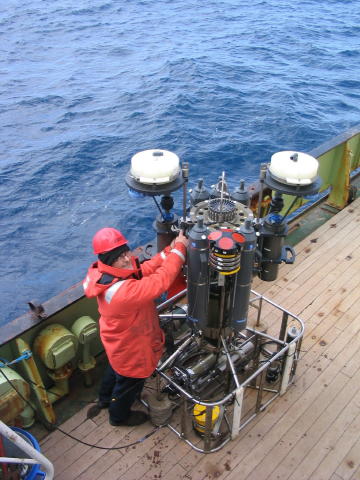 Large volume stand alone pumps
that are used to collect particulate material for
the analysis of iron
Large volume stand alone pumps
that are used to collect particulate material for
the analysis of iron |
|
However,
this is likely to be a very minor source the surface
waters; more likely sources of iron are from deep
water, which rises to the surface (upwells) to the
north of the islands, or possibly continental dust
blown from the South African desert regions by the
prevailing winds. The dust has to be transported a
long way, but remember washing your cars after the
rather frequent Saharan dust falls (red rain) in the
UK.
The way in which iron, which is a very
insoluble element in its stable form in sea water,
becomes available to phytoplankton is something of
a conundrum and another story which is the subject
of great debate in modern oceanography. |